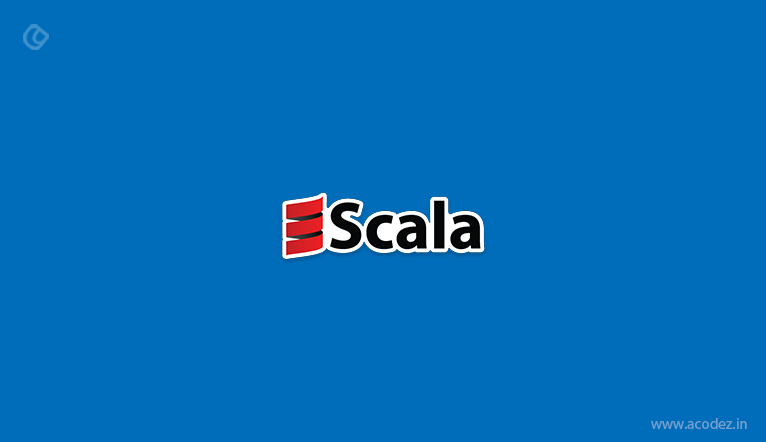A programming world where coding and the related aspects are easier, faster and smoother – smarter and bug-free – we have all wanted something like this to happen at least once. The latest batch of sophisticated programming languages is expected to be in line with these needs of consumers. This is happening and will soon become a constant monotony. We are working on innovative ideas that will blow life into a stable practice across the genre of coding to make it easier and smoother. The growing needs are such that we cannot do without these innovative ideas.
The focus of the developers of these newly invented and under construction programming languages is to implement a lot more automation that will output code on a smarter, bug-free and faster basis. We can expect a new framework where there would be more scope for -abstraction and structuring. This will introduce a seamless integration of user expectation that will be detected by the programming language’s intuition and reproduced as excellent user experience (UX). Once a lot of aspects become automated, the programmer has sufficient time to focus on other vital aspects. These automated strategies bring across prospects fused in with assured competency and equivalent output offering enhanced performance while eliminating any existing contingencies of errors.
Though some of the programming languages have managed to achieve these abilities up to some extent, others have not. So, there is little agreement on the benefits that we discussed a while ago. Some of the programming languages help in bringing about a modernization effect across the traditional languages. There are even pre-processors, not even fully developed languages – which bring about changes in how we write code while founding a base for coding that will be used in future.
Yes, but these kinds of languages do exist as we all know very well. And, here we are sharing a few of these languages that will redefine the way we have been processing commands to machines on how and what has to be done. You might be aware of some of these programming languages, while you might have heard of others, but still waiting to experience the difference.
Java 8

We are all familiar with Java – of course, nothing new. Being used as the mode of articulation for assembly programmes in computers, Java is just like a family member. You have used almost a billion JAR files that are around us. Java 8 differs from this. But, this new version introduces numerous functional techniques that will help in unveiling the kind of similarities within your code. If you are really unsure how it works, you need not bother; you can always return to the comfort zone of your own Java. But, with Java 8, you are opening up newer opportunities for helping the Java Virtual Machine (JVM) to further strategize the execution process. The best part of it is that you can write fast, clear, precise and bug-free code with the latest version. It provides you with the facility to utilize concurrent code and expressions in Lambda.
Go
The programmers have always tried to bring out smart ideas every time they design a new language. But, a collation of these ideas is nowhere to be found. This is when Google decided to design a new form of language that would fuel its server repositories. So, it collated all the brilliant ideas that were found in the other languages implemented by the other programmers. They were quoted saying, “as simple as that could be held within the head of a programmer.” Metaprogramming comes with some of the simplest abstractions – you can find the most simple features that are structured in an understandable syntax matrix. It is intended to make things much easier for everyone across a team. Every aspect stays undisturbed when someone on the team tries to put up a new idea.
C
There are many programmers who love the simple word and the simplicity that “C” offers. “C” offers a very clean and optimized structure and minimized syntax that can be easily mapped on to the CPU. This is why it might be referred to as Portable Assembly. But, haven’t you felt at some point in time that C is taking away from you the advantage of the features that are available in the latest languages. This is one of the reasons that gave rise to “D”. It comprises the combined features and logic of both C and C++ along with the latest sophistication, including type inferences, bound checking and memory management.
Now, you can enjoy all the features in one place.
MATLAB

There was a time when the mathematicians and scientists, as well as researchers and analysts, were on the lookout for a hard-core programming language that would suffice their need to manipulate the complexity of intricate mathematical problems and help them find solutions to these. MATLAB was an answer to all their mathematical queries. Now, this MATLAB has been enhanced even more as developers are moving toward adopting a more complicated mathematical and statistical analytic structure. Mathematicians have been pulling across to test the core of it to ensure that it would provide precise and simpler solutions to help regular and daily users. It provides stable and faster solutions for complex math problems.
CUDA
The power of video cards is being utilized on a large scale. But, when the people happen to encounter a far complicated shooter game that operates on a first-person basis, they start thinking about the extricate details that sum up the particular video that they have been operating across. If this falls into the hands of an appropriate programmer, they will utilize the underlying power to fire up the process. Here is the best way to fuel the Nvidia to get to their graphics processing units (GPUs). Then, you will realize that this can be used for doing things apart from working like robots or attacking zombies, etc. But, when you start using CUDA, you might encounter issues if you are not well versed with the equivalent areas of your algorithm. And, once you get to know about these, you are in possession of CUDA code that will empower you to get to know the inlying power of those video cards. Bitcoins and similar activities would seem to be much easier than ever before, through molecular dynamics might be challenging than expected. A lot of scientists have been using CUDA to resolve simulations in multi-dimensions.
Haskell
Haskell has a huge fan following just like Scala. Yes, you read it right. If you are planning to start your journey through any of the functional languages, then, this is it. Start from here. Some companies, such as Facebook, are already utilizing its powers for good. So, Haskell is an excellent place to invest. You can unlock real performances across real projects – apart from the regular old school coding that you have been used to and bored with.
Swift

There was a lot of hullabaloo over the coding inconsistencies that resulted from writing codes in the Objective C programming language. Apple decided it was the right time to take advantage and fix the issue. And, thus Swift happened. This was Apple’s newly introduced replacement for Objective C when writing code for iPhone or the MAC. The realization that manipulative pointers and the header files to be outdated began. Swift intelligently hid all this extraneous information and made it more clear than writing using some of the modern programming languages, including Java. It is nonetheless different from what the modern code offers us with. It offers us with wider opportunities, wherein the syntax is a lot more developed and precise than Objective C. The features are so many in number that it would be difficult to remember all these. In situations, when programmers will have to go through others code, Swift might seem to be a difficult option. But, except for that, iPhone coders can now turn around and transform code at a faster rate than others. And, the coding part is very clean and perfect – you are saved from manipulative pointers.
Jolt
Remember the good old days when we struggled with XML – when it was in the big data format. Oh yes, we were implementing something like a functional language known as XSLT, a tool that was rather insignificant in handling the huge datasets formerly coded in XML. But, this has been replaced with JSON – the latest in the bandwagon. It has led to the introduction of Jolt, which helps in dealing with the JSON data and migrating it. Here is an opportunity to write snippets that are simple in nature and have the ability to abstract parameters. JOLT helps in retrieving these and transforming as per your desire.
R
R is familiar as a regular programming language to people, but there are not many who are aware of its abilities to make use of statistics that will further help in unlocking patterns across huge chunks of data. Designed by scientists and statisticians, the idea is to simplify the process. One would be easily able to identify and relate to the standard functions that can be used for data analysis. Some of these are easily available as the most helpful algorithms in statistics and you can pick these from the libraries that are distributed for free. Data scientists love it for the data-backed support that it provides. A lot of people are using R within IDEs in the form of highly powered scratchpads that help in retrieving, modifying, analyzing or deleting data. With little help from the front ends, including R Commander and R Studio, you can load your data and amend it as per your requirements. It provides a higher level of interactivity rather than the usual compile and executes mode.
Scala

Functional programming is a domain hat programmers are too fond of and Scala falls into this section of the programming language. The idea behind functional programming is that each of the functional aspects will have a well-defined input and output with no intention to trouble the surrounding variables. Of course, apart from Scala, you might have come across a variety of programming languages. But, here we are discussing Scala as it is one of the widely and popularly known programming languages with a huge fan base following.
Anything that you run on Scala is capable of running on JVM as it was designed to run on it just like Java. You can build a stronger code base, which is easier to optimize with functional programming. Also, this will save you from the effort to get rid of the annoying bugs. This functional and flexible functional programming language can be used with JVM to make things easier and flexible.
Arduino
The Internet of things (IoT) has already changed a lot and is set to bring about further changes as well. There are a number of devices that have been embedded with chips that take instructions on what has to be done. It can be considered as a programming language that is capable of providing the functionalities of C and C++ combined. The remaining is taken care of by the compiler. Programmers are perceiving most of these functions as a blessing in disguise – and specifically, those programmers benefit who are into developing user interfaces for machines. It helps with checking the status of pins on the boards, controlling how LEDs flash up to send messages who stare at the device and read voltages.
Less.js
Less.js acts like a pre-processor for your files making it much easier to collate or accommodate CSS files. If you have worked with building layout rules for websites, you might be aware of the repetition that would be involved while using CSS. But, this is where Less.js enters the scenario and saves you from the effort of working with repetitions. The repetitions are collated in the form of variables, basic constructs in programming and looping. It offers a variety of elaborated constructs, including nested rules that will facilitate you to design standard layout commands in blocks, which can be introduced across any number of CSS classes as you wish. You can introduce a new rule according to the need of the hour and with a little help from Less.js, you can see your dreams unfolding before your eyes.
Coffee script
Javascript is too tiresome if you think of all those times you had to put up with those curly brackets and semicolons. Ain’t it? This is when the idea of coffee script emerged. This pre-processing tool helped in transforming syntactic shorthands into normal JavaScript. It might not be fully developed, but it will save you from the effort of hitting at semicolons and curly braces every time.
You get the advantage of clean code – a code that everyone can understand and benefit from.
Do you need help with web designing or mobile app development or web application development?
Acodez is a web development company in India offering all kinds of web design and development services. We implement the latest industry trends in our design processes to make it flexible and user-friendly, ensuring an enhanced UX. We are also an SEO agency offering the best of inbound marketing services to take your business to the next level.
Looking for a good team
for your next project?
Contact us and we'll give you a preliminary free consultation
on the web & mobile strategy that'd suit your needs best.










